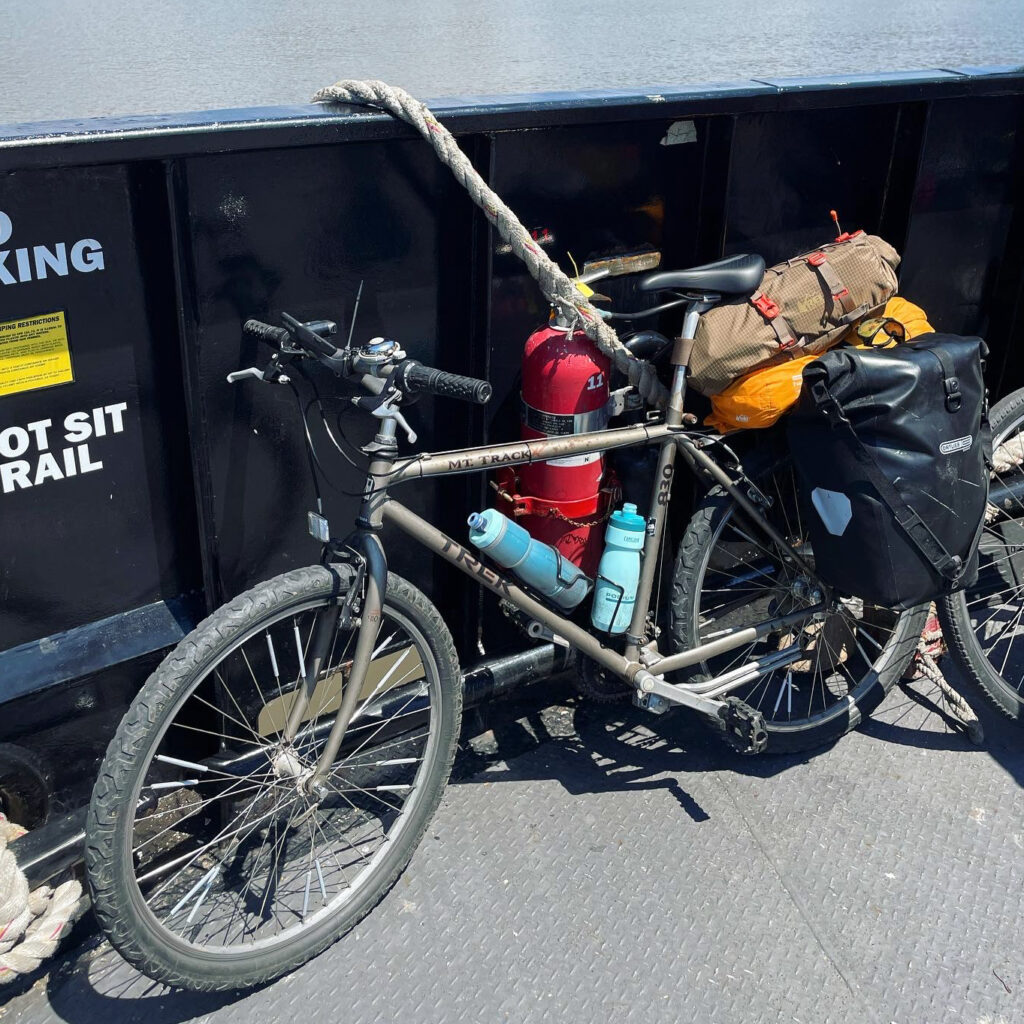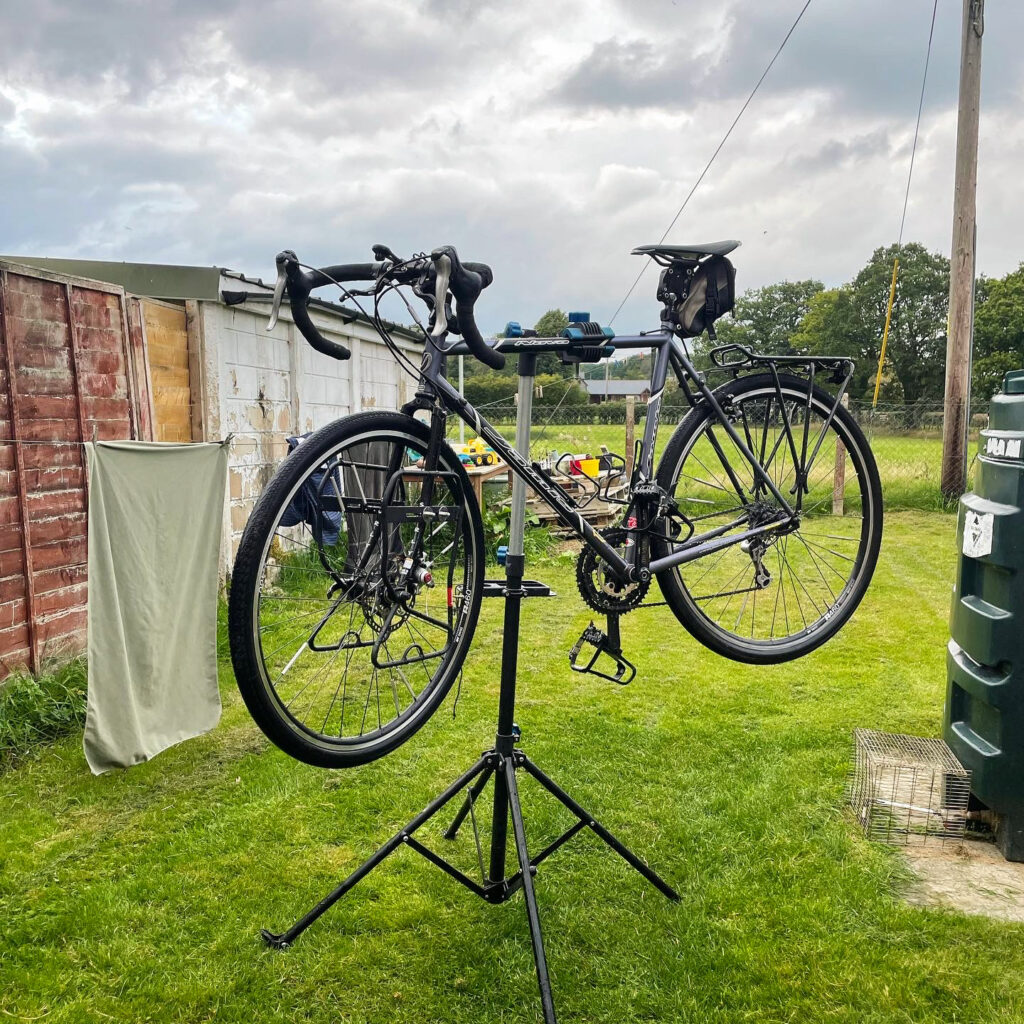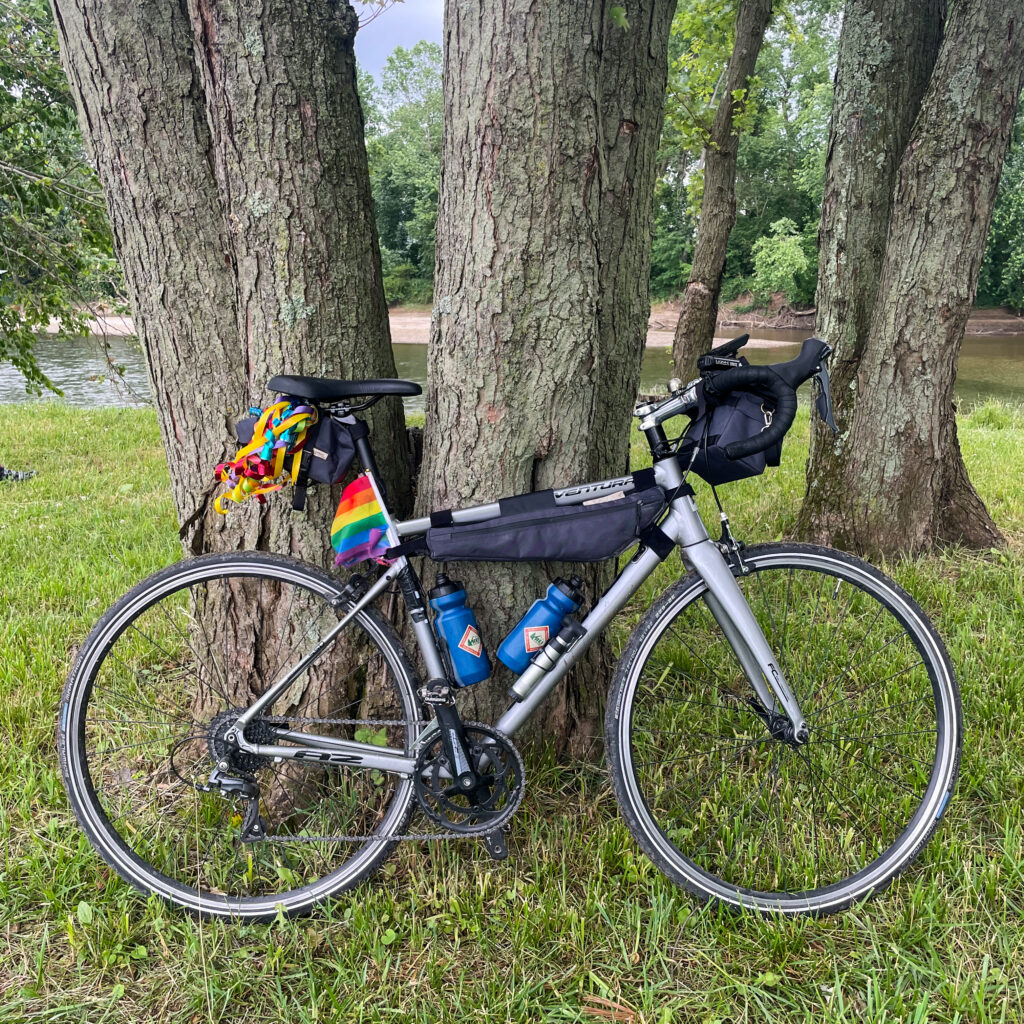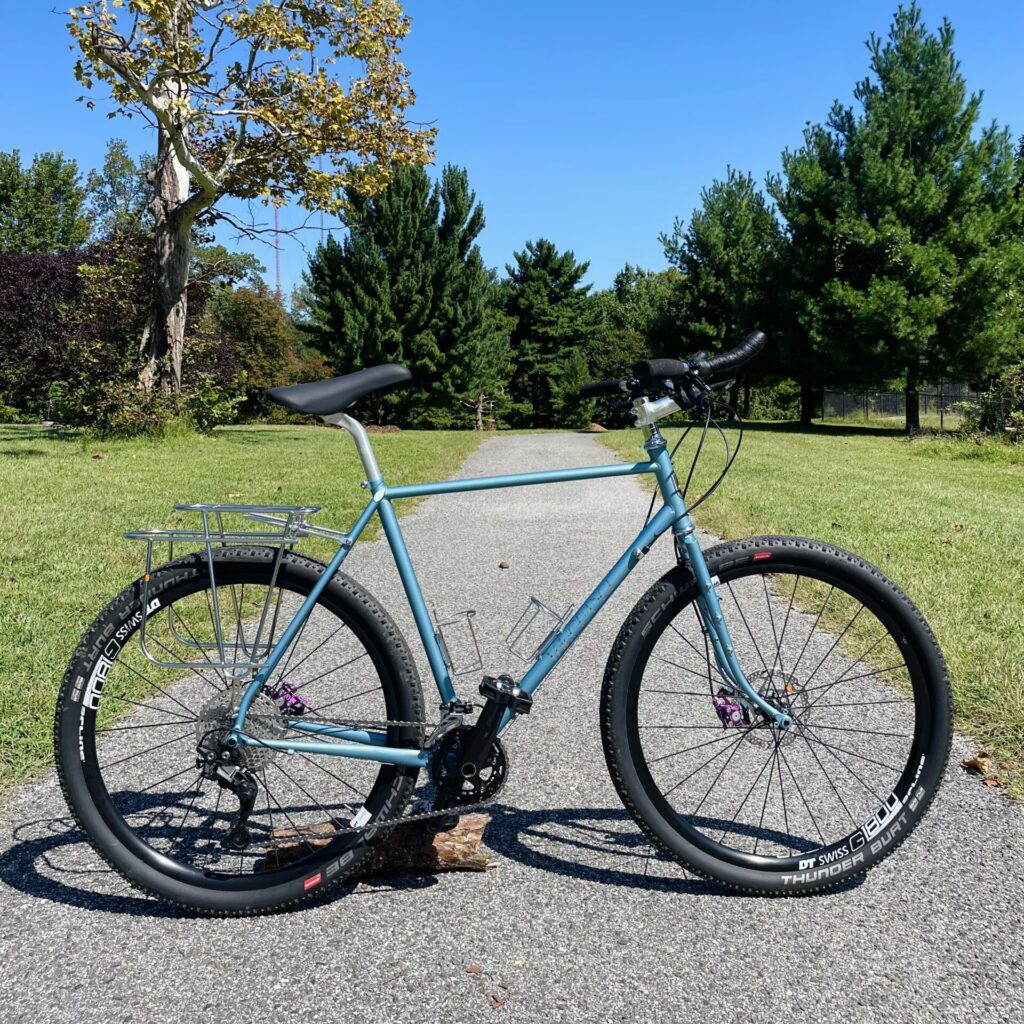Your cart is currently empty!
A Run-Down of the Four Bikes I’ve Used for Bicycle Touring.
When I first got into bicycle touring, I had no idea what I was doing… I knew that I liked biking and that I didn’t have a ton of money to spend on fancy gear, but I knew very little about what qualified as a “good” bike for bicycle touring (hint: any bike can *theoretically* become a bicycle touring bike). If you’re anything like how I was when I first got started with bicycle touring, you’re only at the beginning of the journey, staring at the large learning curve right ahead of you.
In this article, you will read about the four bikes I used on my four separate bike tours, touching on all the important, nitty gritty details about how I acquired it, the cost, its quality/effectiveness for a tour, its strengths and weaknesses, and overall experience. Each bike purchased came with a better understanding about the nuances between bike styles, makes, models, parts and components- at the end of the day, each bike took me where I needed to go, some with aggravating headaches along the way, and others with a sense of ease. I hope that with this article, you can get a better sense of what bike you should purchase (see my tips for buying a used bike) for your upcoming bike tour.
Bike #1: The “Vintage” Trek.

The breakdown:
- Year purchased: 2018
- Location purchased: Atlanta, GA, via a Craigslist ad from someone within walking distance of where I lived.
- Price: $150
- Bike make/model: Trek Mt. Track 830
- Tour used on: Post-college graduation tour- Atlanta, GA to Baltimore, MD, 2021
- Terrain biked on: Pavement, some dirt roads in more rural areas.
- Strengths: Cheap! Also very sturdy (steel is real). And full of nostalgia.
- Weaknesses: Tires should have been replaced at the beginning of the tour (they were very worn down); wheels were a bit damaged as well; shifting was always problem (no mechanic could ever fix it perfectly); it was a bit small for someone of my size; not very aerodynamic; has a 3x drivetrain, which I have come to believe is incredibly stupid for cycling (see a video explaining it briefly here, or a more technical explanation of, and argument for 1x, drivetrains here); has grip shifters, which are hard to use (they can get stuck easily, and if your hands are sweaty, shifting can be very challenging).
- Current use status: This is my backup bike whenever one of my more frequently used bikes is out of commission, or when I just need to get somewhere close by and don’t feel like taking my fancier bikes out. I love it despite all of its flaws!
- Would I recommend this bike/use it again on a tour?: Not exactly. While I do let my friends use this bike when they need a spare for city riding or a one-off weekend bikepacking trip, for a long term trip, this bike is too heavy, and not in the freshest of condition for an intense and adventurous journey. Its parts aren’t likely to get much better, even if most of it was upgraded/replaced, which many have been (and at that point, it would make more sense to get a whole new bike). The shifting issue also makes climbing hills a challenge due to gear slipping, and the 3x drivetrain definitely did not help with that!
Bike #2: The Frankenstein.

The breakdown:
- Year purchased: 2021
- Location purchased: Silver Springs, MD (within driving distance of Baltimore), from someone on OfferUp
- Price: $800-900 (I forget)
- Bike make/model: A true Frankenstein bike (aka, many mismatching parts)- Surly fork, Jamis frame, 9 speed shifting with 8-speed cassette, etc.
- Tour used on: Europe tour- 4.5 months across 10 countries in Europe in 2021
- Terrain biked on: Mostly paved roads, some gravel. The occasional, accidental mountain biking trails usually resulted in me pushing the bike while screaming and cursing Komoot for choosing the path.
- Strengths: Indestructible (thank you steel!); more aerodynamic; better indexing than my Trek; overall in better condition than my Trek; black frame means that it goes with everything
- Weaknesses: Cassette was small (largest ring had 36 teeth, which isn’t much for touring!); very heavy; pedal straps pointed out really far and occasionally hit the front wheel when turning; drop bars proved challenging to steer at times with weight on the fork; 3x drivetrain (see notes above about my distaste for them).
- Current use status: I am thinking of selling the bike (I have a better road and gravel bike now and don’t use this one anymore).
- Would I recommend this bike/use it again on a tour?: No. It was an incredibly heavy bike, required a ten minute explanation of it’s maintenance and overall build history, and I have since decided that drop handlebars and a 3-by setup are not ideal for touring. I love drop bars for regular road cycling and commuting, but for a fully loaded touring setup, the weight on my front fork prevented me from using the drops very often since the bike would very easily waver left and right. I also hate 3x drivetrains!
Bike #3: The USA Road Bike.

The breakdown:
- Year purchased: 2023
- Location purchased: Was through a dealer with the Ulman Foundation
- Price: Free (if you raised the $5000 required for the 4k for cancer program from the Ulman Foundation)
- Bike make/model: Jamis Ventura A2
- Tour used on: 4k for Cancer across the USA summer of 2023 (Baltimore, MD -> San Francisco, CA)
- Terrain biked on: Paved roads, occasionally gravel (although it is not suited for gravel, but can survive some easy paths).
- Strengths: Simple road bike that got the job done; if you took proper care of the bike, it stayed in decent condition.
- Weaknesses: If you didn’t take great care of the bike, it fell apart fast; felt cheap.
- Current use status: It’s the bike I use on my social, athletic, and daily rides back home in Baltimore.
- Would I recommend this bike/use it again on a tour?: Not really. If you are looking to complete a self-supported bike tour, I am unsure if this bike tour be able to survive holding the weight of your bags (it doesn’t have many mountain points to begin with) for a longer tour (unless you have one of those ultra light setups). Additionally, unless you are on champagne gravel paths such as the GAP trail, this bike won’t do very well on off-road terrain, which, often times planned or not, you end up on while touring for longer periods of time. Finally, while I personally did not have many issues with my bike, I had teammates (with the same bike) have a whole variety of maintenance issues such spokes nearly falling out and poor shifting (my bike also had poor indexing at the start of the trip). While this bike is decent enough for your regular bike rides at home, I would not recommend it for self-supported touring.
Bike #4: The Pretty One (The Tank).

The breakdown:
- Year purchased: 2023
- Location purchased: Baltimore, MD
- Price: Free (it was a gift from Velo Orange, but if you added up the cost of the raw parts + an estimate for labor, it would be a few to several thousand dollars)
- Bike make/model: You can find the whole build list here
- Tour used on: New Zealand tour of 2023; several smaller bikepacking trips
- Terrain biked on: Roads, gravel, medium difficulty mountain biking trails
- Strengths: Upright position and multiple hand grips help prevent back and wrist/hand soreness; it’s a tank of a bike; drivetrain build allows for an easier time climbing hills; large tires allow me to destroy the gravel and medium mountain biking roads without weighing me down too much on the roads; very sturdy; several mountain points for a variety of bag setups for touring.
- Weaknesses: The Growtac breaks loosen fairly fast (I had to tighten them every 3-4 days while biking which was extremely annoying); on the downhills/days with tailwind, it was easy to max out on the fastest gear and not be able to go as fast as you would like (for touring, this is really not much of a big issue); the bike is a bit impractical for every day use, but literally so amazing for touring and bikepacking; not suited for advanced mountain biking (unless you love a good technical challenge).
- Current use status: I am touring with this bike as I write this! It will be my bikepacking and gravel bike when I fly back home.
- Would I recommend this bike/use it again on a tour?: Absolutely! This bike is 100% my go-to bicycle touring and bikepacking bike. I have come to learn that when I tour, I like to have a mix of road and gravel, and perhaps light mountain biking paths. While no bike can realistically be as good on the mountain biking paths as it would be on the roads, this bike does a really great job at finding a balance between the two to entertain my wide taste in terrain. Additionally, while I prefer drop bars when cycling around the city, the crazy handlebars have been absolutely amazing for bicycle touring due to the upright position and multiple hand positions. The article above includes the Velo Orange seat, which I swapped out for a used Specialized seat with a mimic. If you were looking for a bike that can do it all, I would recommend this.
I hope you found this information helpful as you prepare for whatever upcoming trip you may have, and if you need some more insight about what bike to get, this article from Bikepacking.com about various bikepacking rigs should inform you about the world of possibilities as well.
Leave a Reply